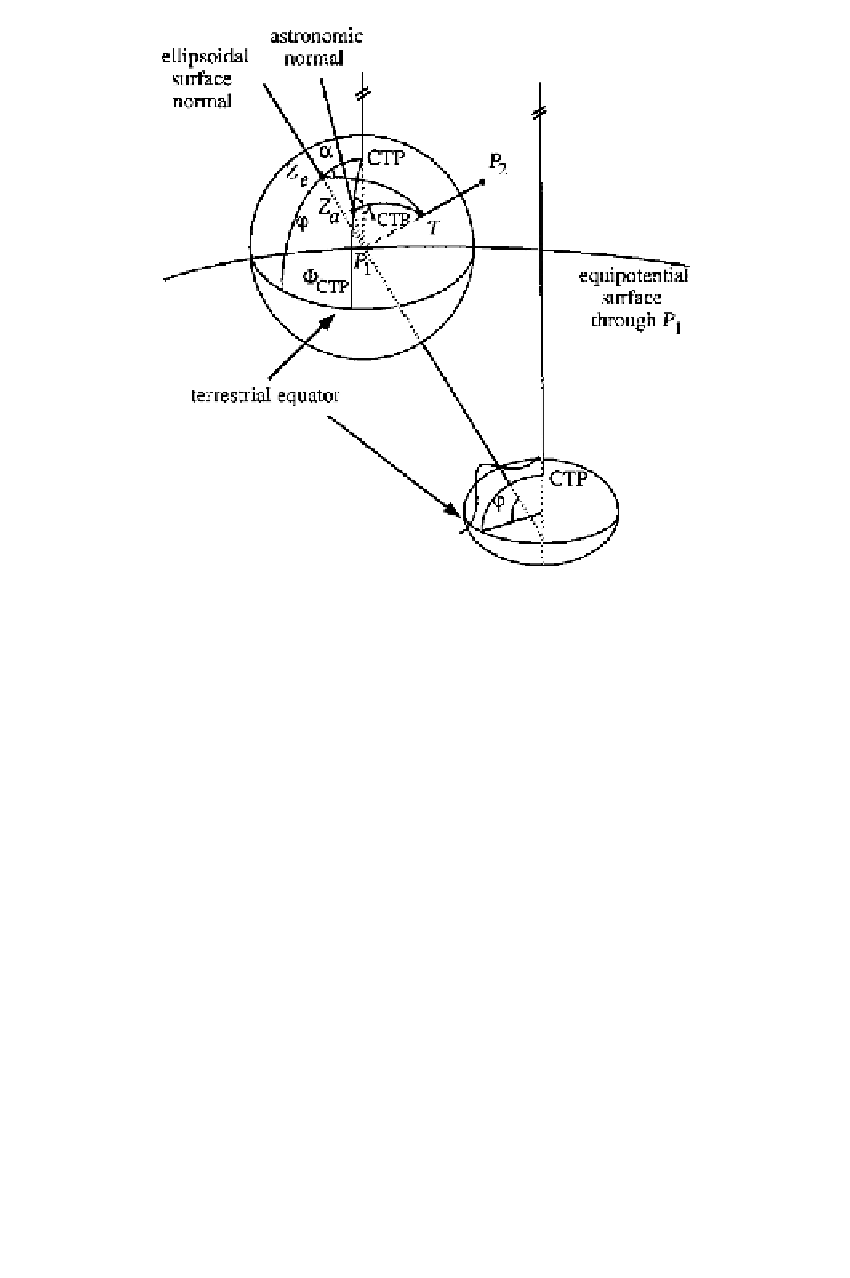Global Positioning System Reference
In-Depth Information
1
2
3
4
5
6
7
8
9
10
11
12
13
14
15
16
17
18
19
20
21
22
23
24
25
26
27
28
29
30
31
32
33
34
35
36
37
38
39
40
41
42
43
44
45
[41
Lin
—
0.9
——
No
PgE
Figure 2.14 Astronomic and ellipsoidal normal on a topocentric sphere of direction.
Th
e astronomic normal is perpendicular to the equipotential surface at
P
1
. The ellipsoidal
no
rmal passes through
P
1
.
[41
where
N
is the geoid undulation with respect to the specific ellipsoid. See Figure
2.13.
Parallelism of the semiminor axis of the ellipsoid and the direction of the CTP
leads to important relationships between the reduced astronomic quantities
(
Φ
CTP
,
Λ
CTP
,A
CTP
)
and the corresponding ellipsoidal or geodetic quantities
(ϕ,
)
. The
geometric relationships are shown in Figures 2.14 and 2.15. The following symbols
are used:
λ
,
α
Z
a
Astronomic zenith (
=
intersection of local vertical with the sphere
direction)
CTP
Position of the conventional terrestrial pole
Z
e
Ellipsoidal zenith (
intersection of the ellipsoidal normal through
P
1
with the sphere of direction)
=
T
Target point to which the azimuth is measured
A
CTP
Reduced astronomic azimuth
Φ
CTP
,
Λ
CTP
Reduced astronomic latitude and longitude
ϑ
Observed zenith angle
ϕ,
λ
Ellipsoidal (geodetic) latitude and longitude
α
Ellipsoidal (geodetic) azimuth between two normal planes










































